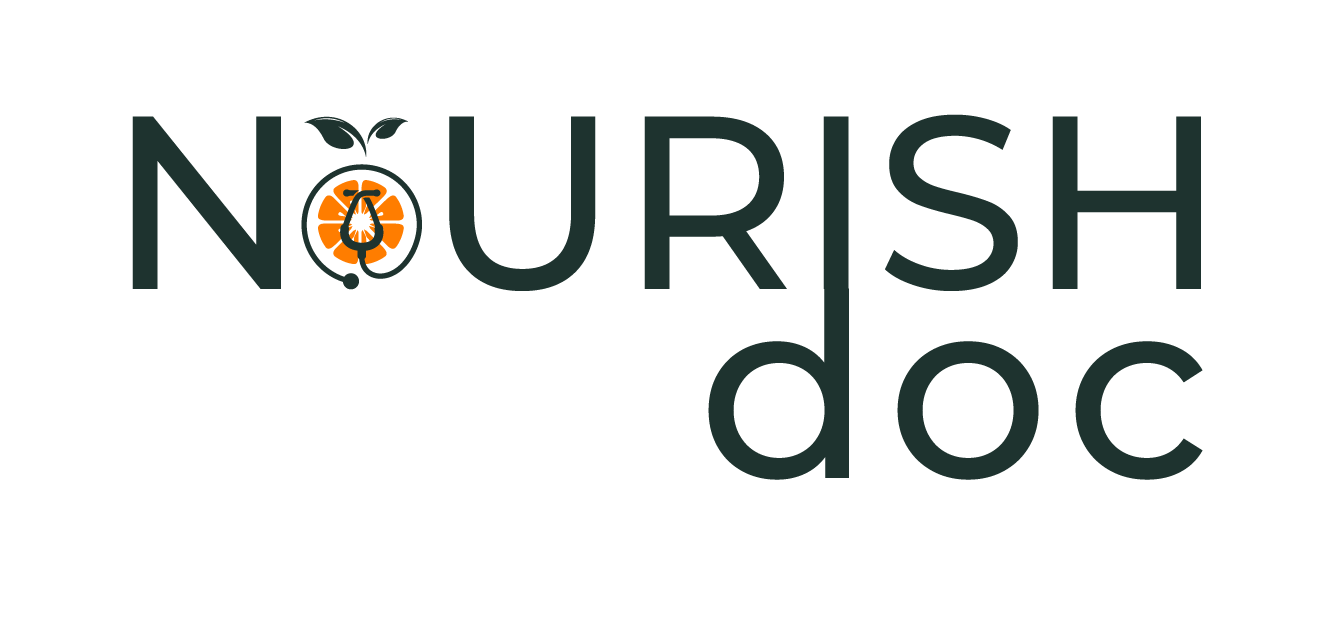Environmental medicine is an interdisciplinary field that focuses on environmental factors’ impact on human health. This field considers the interactions between environmental exposures and individual genetics, lifestyle, and behavior and aims to prevent, diagnose, and treat diseases caused by environmental factors. This article will explore the significance of environmental medicine, its principles, and its applications in clinical practice.
Environmental Toxins Impact On Disease
Environmental factors such as air and water pollution, chemical exposure, radiation, and climate change significantly impact human health. World Health Organization, environmental factors contribute to about 25% of the global disease burden. Environmental exposures have been linked to asthma, cancer, cardiovascular diseases, neurodegenerative disorders, and reproductive and developmental abnormalities.
Environmental medicine aims to identify and prevent environmental exposures that may lead to disease and to treat individuals who have already been exposed to environmental toxins. The field involves collaboration between healthcare providers, public health professionals, and environmental scientists to evaluate the risk of environmental exposure and develop interventions to reduce exposure and mitigate the health effects of exposure.
Principles of Environmental Medicine
Environmental medicine is based on four fundamental principles:
- The precautionary principle
- The principle of prevention
- The principle of individual susceptibility
- The principle of accountability
The precautionary principle states that in situations with uncertainty about the potential harm of environmental exposure, preventive measures should be taken to protect public health. This principle emphasizes the importance of early intervention to minimize the risk of harm.
The prevention principle emphasizes preventing environmental exposures before they occur, which involves identifying potential sources of exposure and taking steps to minimize or eliminate them.
The principle of individual susceptibility recognizes that individuals may have different susceptibilities to environmental exposures based on genetics, age, and underlying health conditions. This principle emphasizes the importance of personalized medicine and tailoring interventions to individuals based on their specific susceptibilities.
The principle of accountability emphasizes the need for responsible parties to take responsibility for their actions and the harm caused by environmental exposures. This principle encourages the development of policies and regulations to hold responsible parties accountable for the harm they cause and to compensate affected individuals.
Applications of Environmental Medicine
Environmental medicine has many applications in clinical practice. One of the primary applications is identifying and preventing environmental exposures that may lead to disease. It involves identifying potential sources of exposure and taking steps to minimize or eliminate them. For example, healthcare providers may advise individuals to avoid exposure to certain environmental toxins, such as lead or mercury, and to take steps to reduce exposure to air pollution or ultraviolet radiation.
Environmental medicine also involves diagnosing and treating individuals who have already been exposed to environmental toxins. It may involve identifying the source of exposure, evaluating the individual’s symptoms and health status, and developing a personalized treatment plan. Treatment may include detoxification therapies, nutritional interventions, or medication to manage symptoms.
Another application of environmental medicine is the identification and management of environmental allergies and sensitivities. Up to 50 million people in the United States are affecting Environmental allergies as a common problem. Healthcare providers may use allergy testing to identify environmental allergens and develop a treatment plan that may include avoidance strategies, medication, or immunotherapy.
Environmental medicine is also critical in responding to environmental disasters and emergencies. Environmental disasters, such as oil spills or chemical releases, can significantly impact human health. Environmental medicine professionals may provide medical support to affected communities, monitor the health of individuals exposed to environmental toxins, and develop interventions to mitigate the health effects of exposure.
Environmental medicine is an emerging branch concerned with environmental factors’ impact on human health, including exposure to toxins, pollutants, and other harmful substances that can lead to chronic diseases and other health problems. Healthcare providers play a critical role in environmental medicine as they diagnose and treat patients affected by environmental factors. We will explore the role of healthcare providers in environmental medicine and the challenges they face in this field.
Environmental medicine has become increasingly important in recent years as the impact of environmental factors on human health has become more evident. Health problems, including respiratory diseases, neurological disorders, cancer, and congenital disabilities, are caused by toxins and pollutants. Healthcare providers play a critical role in identifying the causes of these health problems and providing effective treatment to their patients.
Environmental Exposures Risk Factors
The first step in the role of healthcare providers in environmental medicine is to identify patients who may be at risk of environmental exposures. It requires taking a thorough medical history and asking questions about a patient’s occupation, living environment, and lifestyle habits. For example, healthcare providers may ask about exposure to pesticides, chemicals, and other toxins in the workplace or home and exposure to pollution from traffic or industrial sources. Patients at risk of environmental exposures may be referred to specialized clinics or healthcare providers trained in environmental medicine.
If a patient has been identified as being at risk of environmental exposures, healthcare providers must perform diagnostic tests to identify any health problems related to these exposures. It may include blood tests, urine tests, and other diagnostic procedures that can detect the presence of toxins or pollutants in the body. Healthcare providers may also perform physical exams and other tests to assess a patient’s overall health and identify any other health problems that may be present.
Suppose a patient is diagnosed with a health problem related to environmental exposures. In that case, healthcare providers must develop a treatment plan tailored to the patient’s needs. It may involve prescribing medication to manage symptoms or prevent further damage to the body. Healthcare providers may also recommend lifestyle changes, such as dietary modifications, exercise programs, and other interventions to reduce the risk of further exposure to environmental toxins and pollutants.
Challenges Faced
One of the biggest challenges for healthcare providers in environmental medicine is the need for standardized diagnostic and treatment protocols. Because environmental medicine is a relatively new field, much still needs to be discovered about the impact of environmental factors on human health. It can make it difficult for healthcare providers to identify the causes of health problems and develop effective treatment plans for their patients.
Healthcare providers must stay current on the latest environmental medicine research and developments to address this challenge. They must also collaborate with other healthcare providers and specialists to develop standardized diagnostic and treatment protocols across different healthcare settings. It may involve working with environmental health specialists, toxicologists, and other experts who can guide the best practices for diagnosing and treating patients affected by environmental exposures.
Many patients are unaware of the risks associated with exposure to toxins and pollutants and may only seek medical help once their health problems have become severe. Healthcare providers must therefore play a critical role in educating patients about the risks of environmental exposures and the steps they can take to protect their health.
It may involve providing patients with information about the types of environmental exposures that can lead to health problems and practical advice on reducing their risk of exposure. For example, healthcare providers may recommend that patients use air purifiers in their homes or wear protective clothing and equipment when working in environments where they may be exposed to toxins and pollutants.
Here we discuss this with Dr. Heather Wilde, a naturopathic doctor, to get her thoughts on this topic.
What Do We Understand By Environmental Medicine?
NourishDoc: Hello, everyone. Well, we are talking about Environmental Medicine. Whatever that is, we’re going to find out from Doctor Wilde. Doctor Wilde is a naturopathic medical doctor joining me live right now. She will also take a trip to Antarctica. So, I want I wanted to mention this tidbit here. Welcome, Dr. Wilde. Let’s understand what you mean when discussing environmental medicine and detoxification.
Dr. Heather: So, we are responsible for every single molecule that we encounter as human beings, and we need to either metabolize it or detoxify it so that it doesn’t come into toxic levels in our body, and in the last 20 years, we’ve had 80,000 different industrial chemicals get exposed like introduced into our environment, and we’re exposed to them through our water, our food, I mean, we can even go into EMFs.
But because those are environmental stress on us as well, and our livers and our kidneys and our skin are all vital organs to remove them, so they don’t come up into toxic levels, and the Environmental Working Group is a great resource for people that haven’t been exposed to this before because they did a study. It was in the early 2000s about umbilical cord blood and the number of toxins found in absolute newborn babies, which were over 100 different industrial chemicals.
Most of them have never been studied as far as the impacts that they have on people. Certainly, they’ve never been studied together, and so what we’re doing is we’re swimming in a chemical soup of chemicals that are known to either kill bugs at certain levels. They’re dose-dependent, or they’re found in plastics, and they’re building up. They mimic estrogens and other hormones in our bodies.
One of my favorite teaching tools is when you go into the grocery store or drugstore. You look for antiperspirants; it will say on the back of every single antiperspirant that you should consult your doctor before using it if you have kidney disease. Now, most people over the age of 50 have some grade of kidney disease. You can look at your estimated general function and see whether you’re above 60 or under 100.
You can see if there’s a slowing down of the kidneys, and this is in part because of all of the toxicity exposed to but also because so many of us are chronically dehydrated and so you have to consult your doctor before using antiperspirant because it can put levels of aluminum which is a metal into your body in high enough levels that it can cause health issues if your kidneys can’t clear it well enough plus it also shows how well things are absorbed through the skin.
So we’ve got toxic fragrances, cleaning agents, and things that are in our makeup extended wear lipstick has lead in it to help it with its long wear. So, we’re not supposed to eat paint. We’re supposed to rehabilitate our buildings because of lead. Yet, you can smear it on your face, and nobody is watching or doing anything about it.
So, we have this great inundation of toxicity. I’ve studied with some of the greats that even created Environmental Medicine. They would like to say that genes will point the trigger but toxicity or point the gun, toxicity will pull the trigger as far as wherever you are weak, wherever you are likely to express disease as you get older and exposed to more oxidative stress, etcetera. But toxicity speeds that up.
Why Toxins Are Dangerous
NourishDoc: Wow. I mean, that’s scary, right? What we are swimming and living every single day. It’s terrifying, especially when you talk about the umbilical cord. I also read the research that many toxins are already inside babies’ blood when babies are born.
Dr. Heather: I have a seven-year-old, and I started researching Environmental Medicine in 1999, actually, and so he was seven before I even got pregnant; I detoxified and chelated for years to get this toxicity out, so I didn’t pass it on to him in a big enough burden to predispose him to allergies or neurological issues or immune problems, and so I was conscious of that, and I did, you can go OCD about this, and I have, and then I will remind, but you have to.
I do the serenity prayer, grant me the serenity to accept the things I cannot change, the courage to change, the things I can, and the wisdom to know the difference and so, I use very clean products in my house, and we eat almost entirely organically, and with him, I’ve been so conscious of it because it’s scary that these things pass the placenta. That is supposed to protect children’s things, and they’re passing the placenta.
They’re passing the blood-brain barrier, and one of the craziest things that I went down the rabbit hole with, with him, was that all of those really cute, little, fluffy, fleecy pajamas that you put on your babies have flame retardants in them that can pass through the skin and build up in the baby’s body when they sweat in them at night and then, you’ve got this body burden of a flame retardant, PCBs are retardants, and those are super high in Atlantic salmon.
So all of these chemicals have been shown, they’ve been shown to cause autoimmune disease and predisposed to neurological defects and mimic hormones and cause cancer, and so it’s been really difficult to look at that and try to protect him but also let him eat cheese it now and then and not get too crazy about it.
How To Live A Healthier Life & Avoid Different Problems?
NourishDoc: That’s what happened like if you look at the age we live longer now as a society if I’m commenting, but the quality of life.
Dr. Heather: Right, I mean, this generation now, there’s been a decrease in longevity. So, not only do we have a decrease in quality of life, but we do have a decrease in longevity. So you think about it like they have done studies showing that air pollution makes diabetes worse, and they’re like, how could that possibly be?
But it’s because it feeds your inflammation, and we are one being. If you look at it from a holistic perspective, it’s certainly not out of the realm of understanding that inflammation makes everything worse; these chemicals make inflammation worse.
They stress the body, and you can also look at air pollution along highways in LA; they did a study showing that it was linked to a tension issue and deficit in hyperactivity disorders, and the kids that went to schools near those big highways because of the toxicity that was in the air and the environment and so you’ve got this aspect of Alzheimer’s being associated with inappropriate use of glucose and blood sugar in the brain and the inflammatory process with that, but also so many of these chemicals and these toxicants are damaging to neurons, and that’s how they kill bugs, a lot of them.
So, that’s how they’re also affecting us as we build them up and build them up and build them up and your body when you’re, it’s important now to switch into, well, how do we get them out? It’s a crazy problem. Like, what are we going? We’re inundated by it. It’s everywhere. How do we get it out? Well, first of all, you avoid it.
How do you avoid it? You read labels. You educate yourself. You eat organically whenever you can. Again, the environmental working group is an incredible resource to help decrease your body burden. Choose healthy makeups or things that aren’t poisoning you, decrease your exposure, and then detoxify yourself; I would love. If foot baths took out the toxicity that you needed to take out, I would be in them all day, all day, right?
And so, how do you support so they don’t necessarily, they might do a little, but supporting your liver with the things that regulate their phase one and phase two detoxification, as well as three, right? Like making sure that you’re sweating and moving because many of these things get stuck in the fat. Then the fat is deposited to insulate you from the toxicity and damage they cause in your body, and so what surrounds all your neurons?
Fat because you’ve got a myelin sheath that’s made out of steal lipids which help with the conduction but also will hold a lot of these chemicals, and so when you start to have lipolysis and fat loss with different diets and things, you can mobilize toxins that make you feel sick if your liver isn’t functioning well if your kidneys aren’t supported.
There are nutrients and herbs, and processes that you can do. If you’re constipated and not going to the bathroom at least once a day in an easy, satisfying manner, that is one of the worst things you could be doing for your body. Then, estrogen is tremendously constipating in many ways when it’s out of balance. So, if you’re estrogen dominant, you’ve got more, you’re holding more fat, then, you’ve got more like plastics that and plastic that mimics estrogen and our estrogen analogs.
You’re just compounding the system on top, at the top. So, then, you start to have symptoms, and so if you detoxify, you lower the inflammation and help your liver get rid of it. You help your kidneys express it, and you sweat and make sure that you’re opening up those mandataries and that avoiding it will at least give you a good head start.
NourishDoc: Those are great tips. The world that all of us are living in is so terrifying, and how do we reduce our toxic burden on a day-to-day basis? We could do that like you were talking about, making the right choices and detoxifying and detoxifying our body on; how many times in a year should we detoxify ourselves like the clean, like the deep cleaning of our systems inside, right?
Dr. Heather: I think so. My clients usually undergo at least one good four-week process a year. Once they do that, they get in touch with their bodies, and I’ve designed one that’s probably the way; it’s extreme. Like, you said, I’m going to Antarctica. My life is extreme. I’m an extremist, so it’s amazing that you’re lowering your inflammation with your food.
Then, you’re just opening up all of that process and making sure that you’ve got redundancy of nutrients that you don’t get the negative side effects in your getting in touch with your body because your body is telling you what’s wrong. If you pay attention to it and most of us ignore it, they’re like, well, I have to do my pickup with the kids. I have to go, and I have to work out, and then I have to make sure that this report is done for my boss.
I have to hit these markers as far as professionally and personally. My husband says I don’t spend enough time with him anyway. So we just, when you’ve got a headache, you’re like, well, I’ll take a, I’ll take a Tylenol, and I’ll push through whatever is, and we ignore these things that our body are telling us.
So, I think that one of the beautiful things about detoxification and really doing these periods that last a bit longer like four weeks, you really get in touch with your body and what it’s telling you and then, after that, I think it’s good to do it seasonally just because I like being synced up with the rhythms of the planet and I think that seasonally doing it for a week on, once you get it dialed in but also, like, if you don’t feel well, do it and some people I put them on it and they complain and they hem and they’d like, oh god, this is hard and then, they’ll stay on it for months because they feel so much better.
So, I do think that, ideally, it’s seasonally, at least doing a good, deep clean once a year, I think is probably best for us, but also just making sure that you’re doing the things that support you overall, and supporting your liver every single day, drinking enough water that your kidneys are flushing every single day, making sure that you’re having good bowel movements every single day and so at least that’s setting you up for success bit by bit.
NourishDoc: I think a great talk. Something to get inspired over the weekend and start reducing a toxic load daily. Thank you so much. To all of our viewers, we are launching workshops and making all these talks available to you for free, some building a huge library, hopefully, the largest library in a holistic lifestyle. So, stay tuned, and keep supporting us; we are almost at 200,000. So thank you so much to everyone for your support, and thank you, Doctor Wilde, for sharing such amazing information. Thank you. Bye bye.






